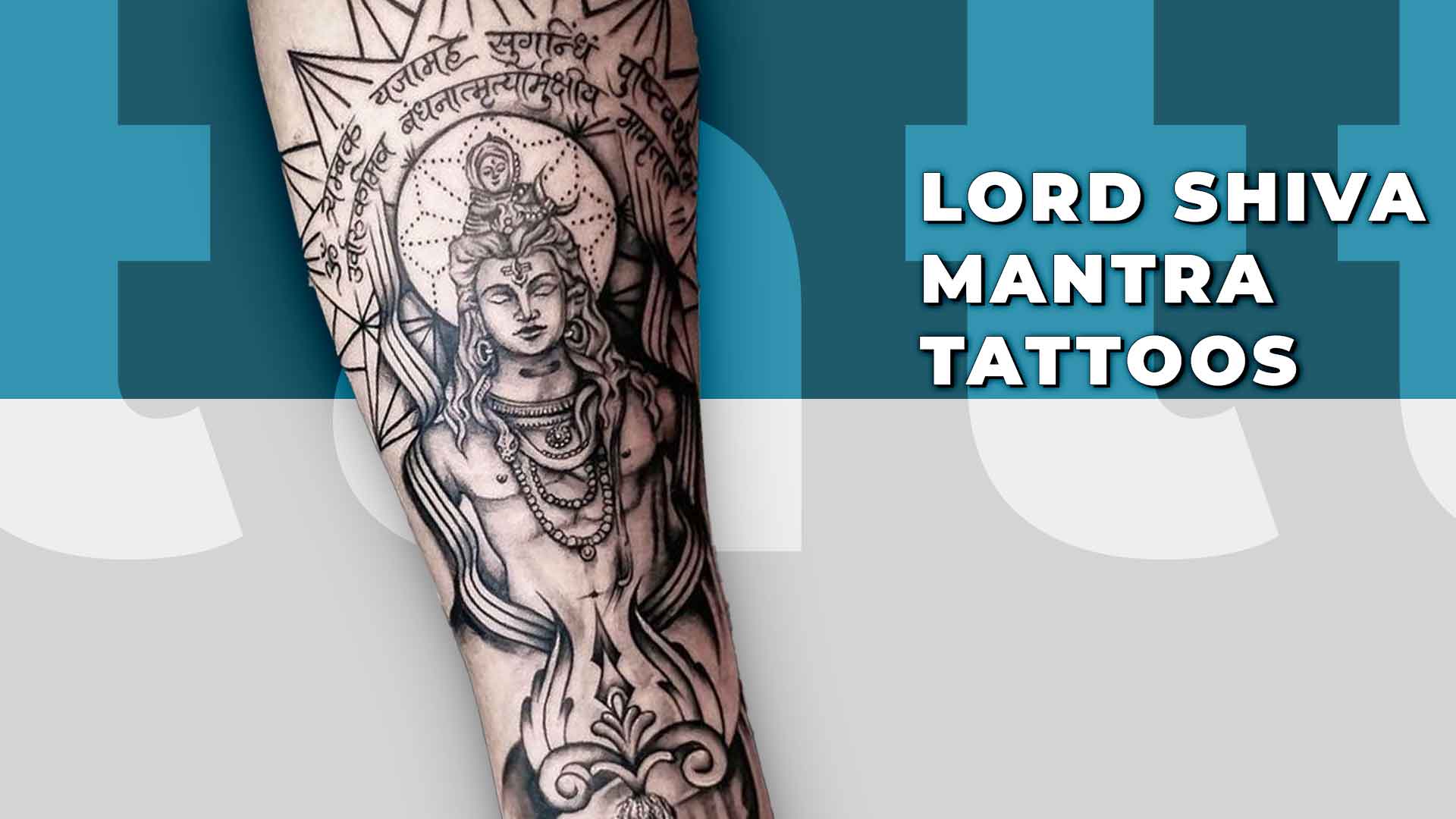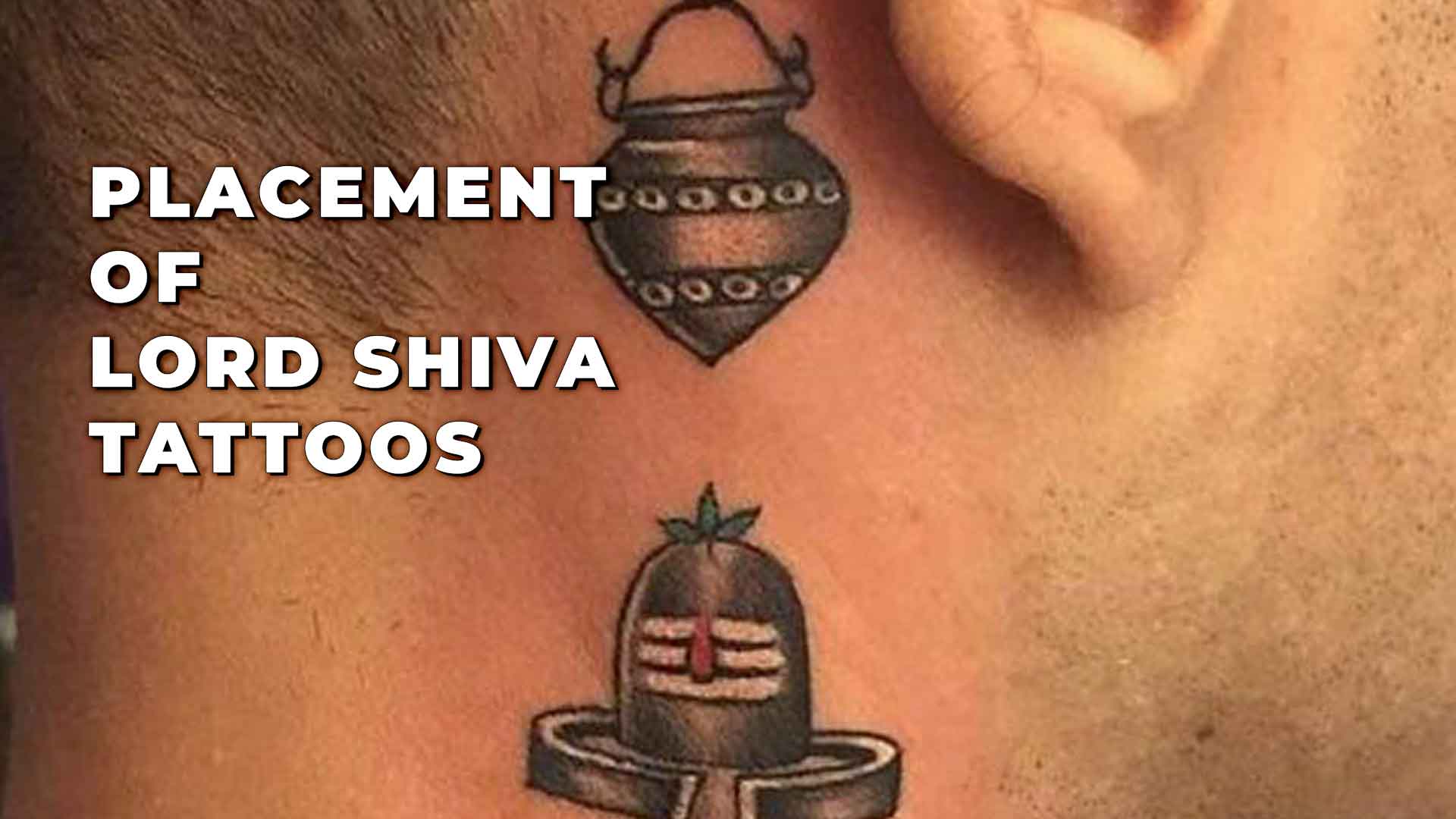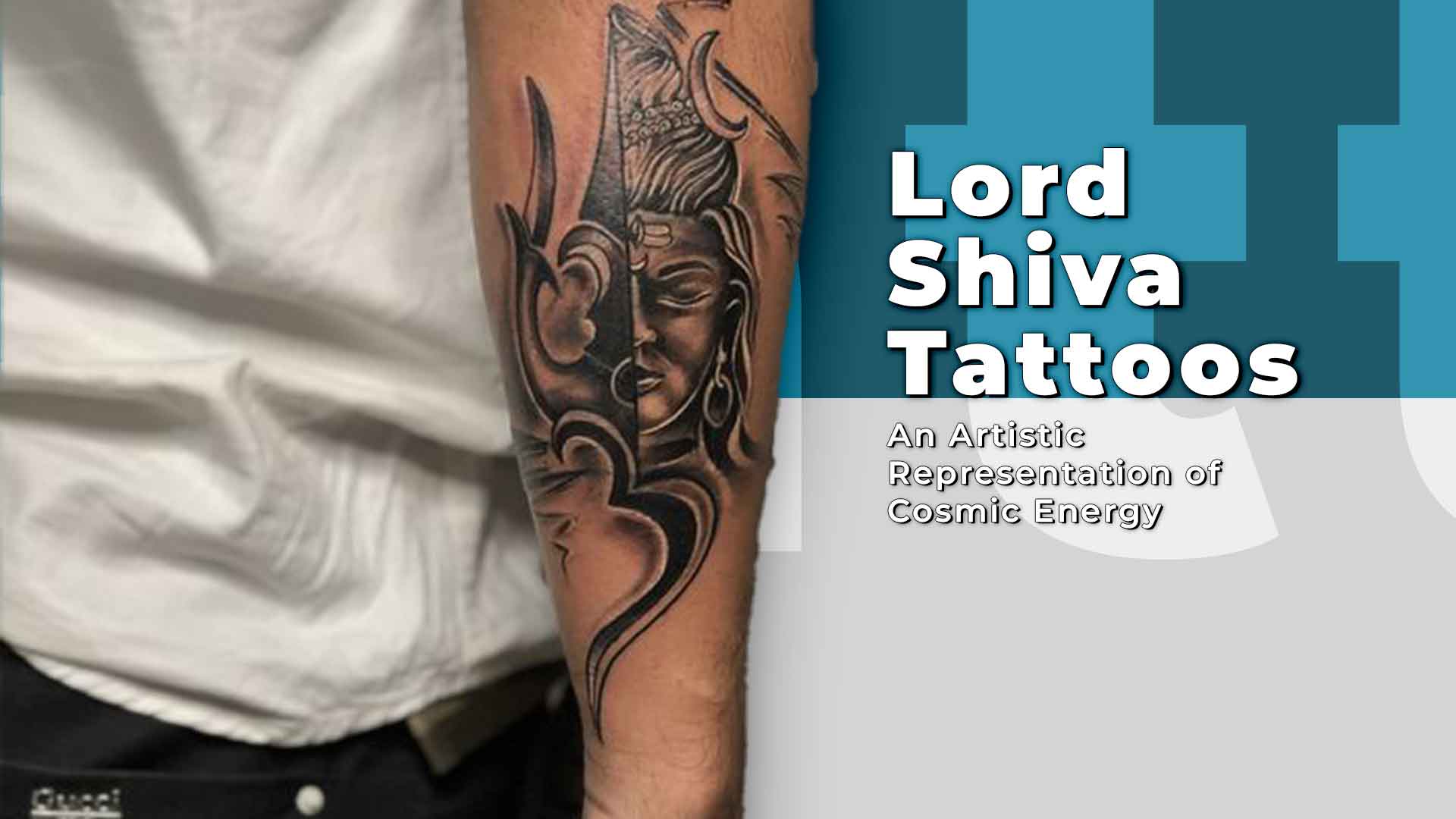When it comes to religious tattoos, Lord Shiva is the top choice. Mahadev tattoos are highly popular among both men and women, and the trend is still going strong.
Lord Shiva is revered as the embodiment of the “Great God” or “Mahadeva” and is part of the Hindu Trinity, alongside Bramha and Vishnu. Shiva is recognized as the destroyer of evil, with the destruction and recreation of the universe being cyclic in nature. Shiva’s various avatars, such as Mahakaal and Shankara, exhibit strikingly different personalities, with the former destroying everything and the latter creating something new. The Ardhanarishwara avatar depicts Shiva as a unique symbol of both masculine and feminine energies, inseparable from Shakti or Parvati. People connect deeply with this symbolism and the philosophy of Shaivism, finding profound emotions rooted in their lives.
The association between Shiva and meditation creates a long-lasting impact. There are numerous depictions that represent various aspects of Lord Shiva, and when combined with the client’s personal experiences, they result in captivating and unforgettable tattoos.
Symbolism of Lord Shiva Tattoos

Lord Shiva tattoos are rich in symbolism, representing various aspects of the deity’s character and mythology. Here are some common symbols associated with Lord Shiva tattoos:
Third Eye – Lord Shiva is often depicted with a third eye on his forehead, which symbolizes his spiritual and intuitive insight. A tattoo of the third eye can represent the wearer’s own spiritual awakening and heightened awareness.
Trishul – The trishul, or trident, is one of Lord Shiva’s most well-known symbols. It represents the three fundamental aspects of existence: creation, preservation, and destruction. A trishul tattoo can symbolize the wearer’s connection to these aspects of life and the cyclical nature of existence.
Nandi – Nandi is Lord Shiva’s mount, a bull that represents strength and fertility. A tattoo of Nandi can symbolize the wearer’s own strength and power, as well as their connection to the natural world.
Snake – Lord Shiva is often depicted wearing a snake around his neck, which symbolizes his power over death and rebirth. A tattoo of a snake can represent the wearer’s own ability to shed their old skin and emerge anew.
Om – The sound “Om” is considered to be the primordial sound of the universe, and is often associated with Lord Shiva. A tattoo of the Om symbol can represent the wearer’s connection to the divine and the universe at large.
The Damaru: The Damaru is Lord Shiva’s sacred musical instrument, and it is believed that the sound it produces originates creation and perpetuates the universe. The top portion symbolizes the male creativity of procreation (the Lingam), and the downward representation symbolizes the female creativity of procreation (the Yoni). This tattoo is often paired with the Trishul to symbolize the destruction of evil and the recreation of the world.
Rudraksha: The Rudraksha bead is considered precious because of its divine healing powers. It is often paired with the Trishul and Damaru to cover all the elements of Lord Shiva. Only those with Lord Shiva’s blessings are said to have the opportunity to wear it.
Lord Shiva Poses
Nataraja pose
Tattoos of Lord Shiva in his Nataraja pose have become a popular choice among our clients. This pose depicts Lord Shiva in a dancing position, also known as the “King of Dance”. The tattoo represents the harmony between male and female energies, as well as the elimination of fear. Lord Shiva, who is associated with music, dance, and knowledge, is also known for his destructive abilities.
Ardhanareshwar pose
The Lord Shiva avatar that embodies both masculine and feminine energies symbolizes balance and procreation. This tattoo is popular among clients seeking a realistic depiction of this powerful concept.
Meditative Lord Shive pose
Another popular tattoo choice is the meditative pose of Lord Shiva, which represents serenity and is favored by those who seek truth and practice meditation. This tattoo can be interpreted in various ways, with some believing that it can lead to a deeper spiritual dimension in one’s life. Combining dot-work and mandala art can create a beautiful and intriguing design.
Aghori Shiva pose
The Aghori Shiva tattoo represents primitiveness and the freedom from worldly illusion. Aghoris are ascetics who believe that inner beauty is immortal, and that outer beauty is temporary. This depiction of Lord Shiva as a wanderer facing south represents the regenerative and destructive elements of Lord Shiva. This powerful imagery resonates with clients who have a spiritual inclination.
Lord Shiva Mantra Tattoos

Maha-Mrityunjaya Mantra Tattoo
Clients seeking inner peace and tranquility are drawn to this tattoo, as it is believed to conquer death and instill a sense of serenity. The Maha-Mrityunjaya Mantra is composed of three Sanskrit words – “Maha” meaning great, “Mrityun” meaning death, and “Jaya” meaning victory over death. It is believed to improve mental, emotional, and physical health, as well as provide longevity and immortality. Due to its powerful meaning, clients are attracted to this Shiva tattoo, which can be designed in a variety of creative styles, including calligraphy and trash style, and can be combined with Lord Shiva and other elements for a captivating look.
Om Namah Shivaya Tattoo
This tattoo features a simple yet strikingly creative design of the sacred mantra “Om Namah Shivaya,” which means “adoration to Lord Shiva” or “I bow down to the auspicious one.” This mantra is chanted by sages and devotees of Lord Shiva to pay homage to the supreme God. This tattoo is highly sought after by those who appreciate simplicity and meaningfulness in their tattoos.
Duality of Lord Shiva

Symbolism is an integral part of tattooing, and Lord Shiva tattoos are no exception. Lord Shiva is a deity who is worshipped as the lord of destruction in Hindu mythology. He is often portrayed with various symbols and is said to represent duality, balance, and cosmic energy. Many people who seek tattoos of Lord Shiva are drawn to the symbolism associated with his various depictions. Let’s explore some of the symbolism behind Lord Shiva tattoos.
Shiva-Kali tattoo
One of the most popular depictions of Lord Shiva is the ‘Shiva-Kali’ tattoo. This tattoo combines the images of Lord Shiva and Goddess Kali, which represents rage and anger. The imagery is mesmerising and symbolic of how one overpowers the other, yet they are in sync. The combination of beauty and destruction is an amazing sight, and this concept is appealing to many clients. The ‘Shiva-Kali’ tattoo symbolises duality and balance, and it sparks an interest in clients who seek insightful symbolism and a staggering look.
Shiva-Parvati tattoo
Another popular tattoo design is the ‘Shiva-Parvati’ tattoo. The depiction of Lord Shiva and Goddess Parvati represents a combination of love and duality. This concept is attractive to many clients and connects with emotions of love. The ones who follow Shaivism hold this duo in high regard. This eternal tattoo design is in high demand when it comes to the youth as well as the elderly.
Shiva-Sati tattoo
The ‘Shiva-Sati’ tattoo is another popular design that depicts Lord Shiva with his consort, Goddess Sati. The duo represents love and duality and is in high demand among clients seeking Lord Shiva tattoos. The image of Lord Shiva and Goddess Sati is symbolic of the balance between male and female energies, and it is a representation of the ultimate form of love.
Placement of Lord Shiva Tattoos

The placement of a Lord Shiva tattoo can vary depending on the individual’s preference and the size of the tattoo. Here are some common placement options:
- Forearm – A small Lord Shiva tattoo on the forearm is a popular choice, as it is easily visible and can be covered up if needed.
- Back – A larger Lord Shiva tattoo on the back can be a stunning piece of artwork, showcasing the deity’s power and strength.
- Chest – A Lord Shiva tattoo on the chest can represent the wearer’s own strength and power, as well as their connection to the heart and soul.
- Thigh – A Lord Shiva tattoo on the thigh can be a more discreet option, but still allow for a larger design.
- Foot – A small Lord Shiva tattoo on the foot can be a subtle nod to the deity, and can also represent the wearer’s connection to the earth and nature.
Final Thoughts
Lord Shiva tattoos have gained immense popularity over the years, owing to their powerful symbolism and unique designs. They offer a sense of connection with a higher power and help individuals express their inner strength and spirituality. From the Trishul to the Third Eye and Maha-Mrityunjaya Mantra, there is a Lord Shiva tattoo design that will resonate with everyone.

